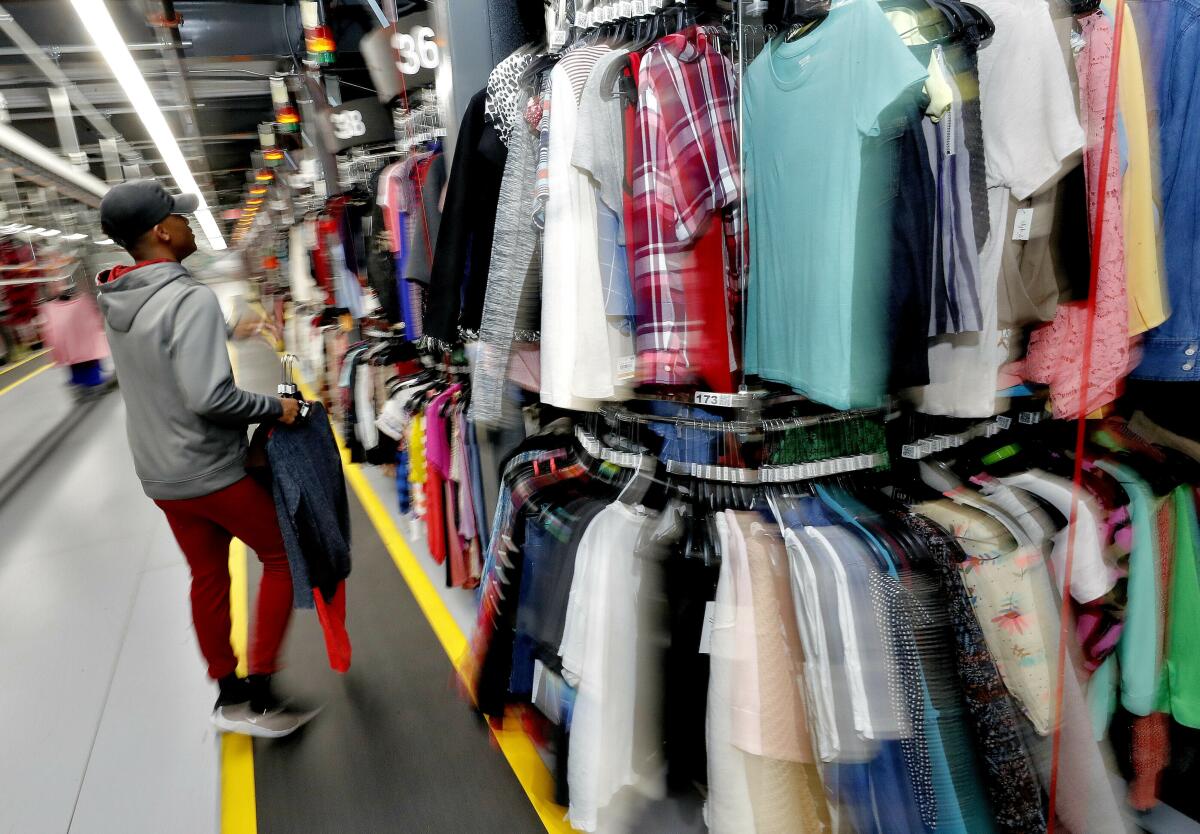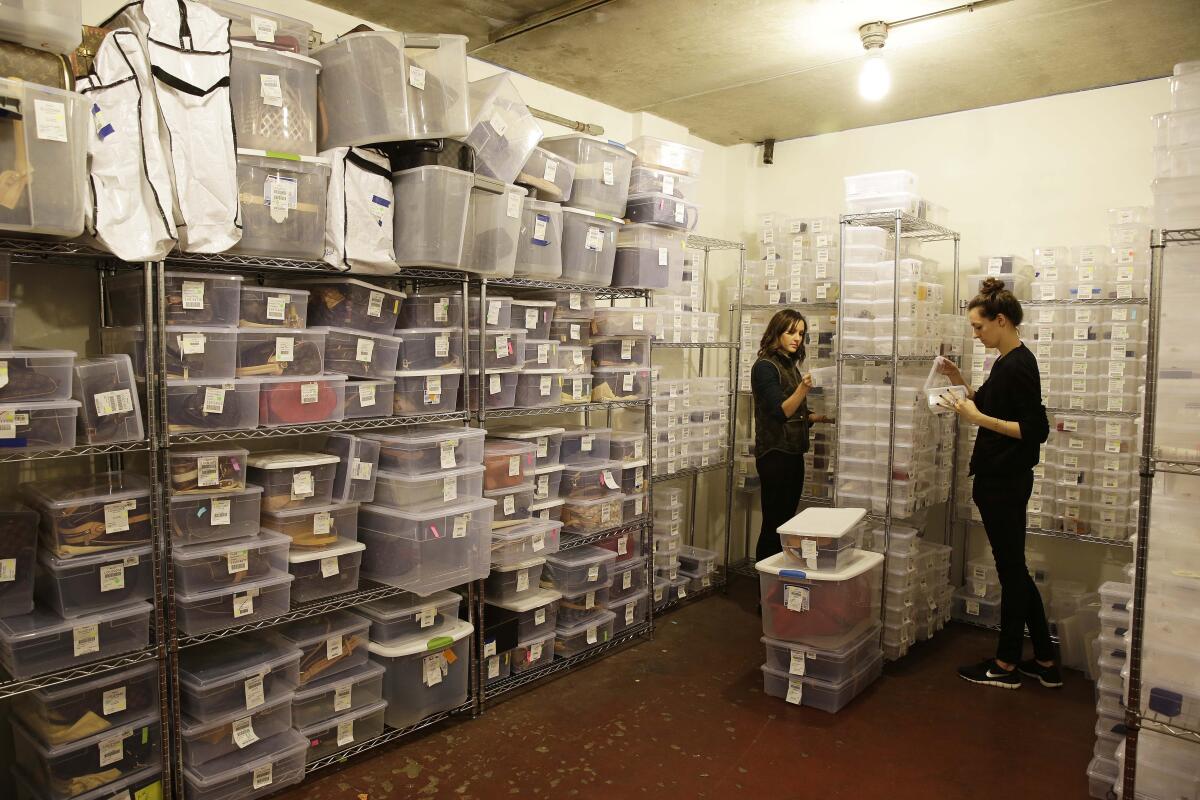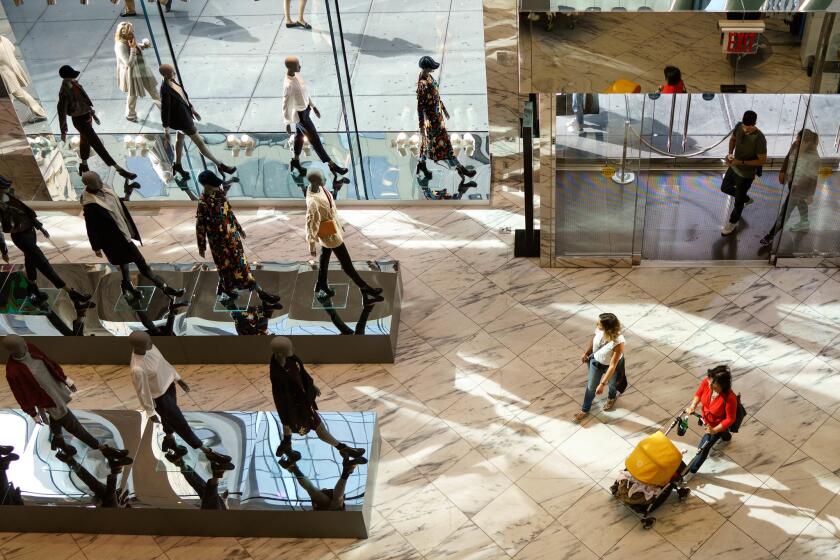Used stuff is the next big trend in Christmas shopping

This holiday season, most of the Christmas presents Akil McLeod buys for his family members already will have belonged to someone else.
It’s a shopping habit that McLeod, who turns 30 on Christmas Day, has been practicing for nearly a decade. Last year he gave his wife a green leather jacket that he bought at a garage sale. It fit like a glove. Once, he shocked his mom with a vintage Gucci purse.
“She’s been getting those really unique gifts from me and it’s something that you wouldn’t find at a Macy’s,” said McLeod, a former educator who now works full time reselling items on sites such as EBay and Poshmark from his home in Santa Barbara. Of the $100 he plans to spend this season on personal gifts, he estimates 70% will be from secondhand stores, where he says he snags better deals — and enjoys the thrill of the hunt. “Vintage is probably the biggest that it’s ever been,” he said.
McLeod is part of a growing group of consumers who feel comfortable incorporating secondhand items into their holiday shopping list. Once taboo, the pre-owned market is increasingly seen as a savvy way for shoppers to save money, discover harder-to-find items and reduce their carbon footprint in an age of disposable fashion.
The clothing industry is responsible for about 10% of global greenhouse gas emissions and consumes more energy than aviation and shipping combined, the U.N. says.
Buying secondhand isn’t necessarily the same as committing the unthinkable act of regifting — a term popularized in a 1995 episode of “Seinfeld” as an unwanted label maker gets passed person to person. Nearly half of U.S. consumers said they would consider giving used apparel as a present this year, according to a study from Accenture. Even more said they would enjoy receiving gifts from the resale market.
“Things are changing, especially among young people who try to be sustainable and want to be part of the circular economy,” said Sucharita Kodali, an analyst at Forrester Research. “Those are the ones that are not only going to be purchasing this stuff but going to feel good about buying it as gifts — and introducing friends and family to those brands as well.”
Resale has been growing rapidly across the United States, with the secondhand market forecast to grow to $51 billion by 2023, according to an estimate by online thrift store ThredUp. Given that growth, resale businesses are prepping for what could be their biggest holiday season yet, especially as Americans rev up to spend more than they did last holiday season.
But it’s not just yard sales and corner shops. Even before the holidays, 2019 has been a landmark year for secondhand sellers, especially as the local thrift shop goes corporate. This spring, Neiman Marcus invested in Fashionphile, a pre-owned-goods e-commerce company focused on luxury handbags and accessories. Macy’s Inc. and J.C. Penney Co. both announced in August partnerships with ThredUp. Luxury consignment shop the RealReal Inc. went public in a $300-million offering in June. In addition, venture capital investors have pumped more than $1.1 billion of funding into used-clothing operations over the past several years, according to data compiled by Bloomberg.

As Black Friday and Christmas approach, resellers are betting the stigma of gifting used goods has fully fizzled. And it’s more than vintage T-shirts and discount scores that might find their way into your stocking.
“Now people are like, ‘Buy me the Gucci on Poshmark,’ ” said Manish Chandra, founder of the resale site. After seeing more users turning to resale for holiday shopping, the site debuted a “gifts market” last year, he said.
At the RealReal’s new Madison Avenue location in Manhattan — surrounded by high-end stores such as Ralph Lauren, Emilio Pucci and Lanvin — the shop has been outfitted for the retailer’s first “Insanely Rare Gift Guide.” It features about 150 items, including a $6,175 Pablo Picasso earthenware hibou pitcher, a $2,750 pair of Louis Vuitton sneakers and a set of three Takashi Murakami skateboard decks going for $3,500. The RealReal’s Hermes expert points to the rarest handbag on the shelves, a limited-edition black Birkin Sellier with palladium hardware that’s listed for $30,000. Signs read: “This holiday season, why settle for a ho-hum present when you can rise to the highest level of gifting genius?”
The RealReal Chief Operating Officer Rati Levesque said the percentage of orders needing gift boxes had tripled this season. Classic high-end items have been the most popular, including Rolex and Cartier watches along with handbags from Louis Vuitton, Chanel and Hermes. Whatever they’re buying, gift-giving shoppers are making sure to seek out products with less wear and tear than the usual purchase.
Younger consumers are some of the most fervent shoppers latching onto the resale trend. Of Gen Z shoppers — the cohort behind millennials that spans early elementary school through college — 80% said they planned to give thrifted gifts, according to a survey released Thursday by ThredUp. Instead of physical items, some people are even handing out gift cards to thrift shops. Gift card purchases at Thrilling, an e-commerce site that helps mom-and-pop vintage shops expand their digital presence, have risen 200% year over year — and the average balance is $150, according to founder Shilla Kim-Parker.
Grayson Townsend, a 15-year-old from Port Orchard, Wash., spent a recent afternoon while vacationing in New York shopping at Buffalo Exchange, a buyer and seller of used clothing that has been around since the 1970s. She said she didn’t mind giving previously owned gifts to her twin sister and friends. If you go to a traditional retail store, someone’s probably already tried on that pair of jeans, she said, and shoppers aren’t grossed out by that. So what’s the difference?
“I can’t afford Banana Republic or other expensive clothes, but if I buy secondhand, I can buy more stuff and make their presents better,” Townsend said. “There’s something called a washing machine.”
Holman, Moore and Bhasin write for Bloomberg.
More to Read
Inside the business of entertainment
The Wide Shot brings you news, analysis and insights on everything from streaming wars to production — and what it all means for the future.
You may occasionally receive promotional content from the Los Angeles Times.











